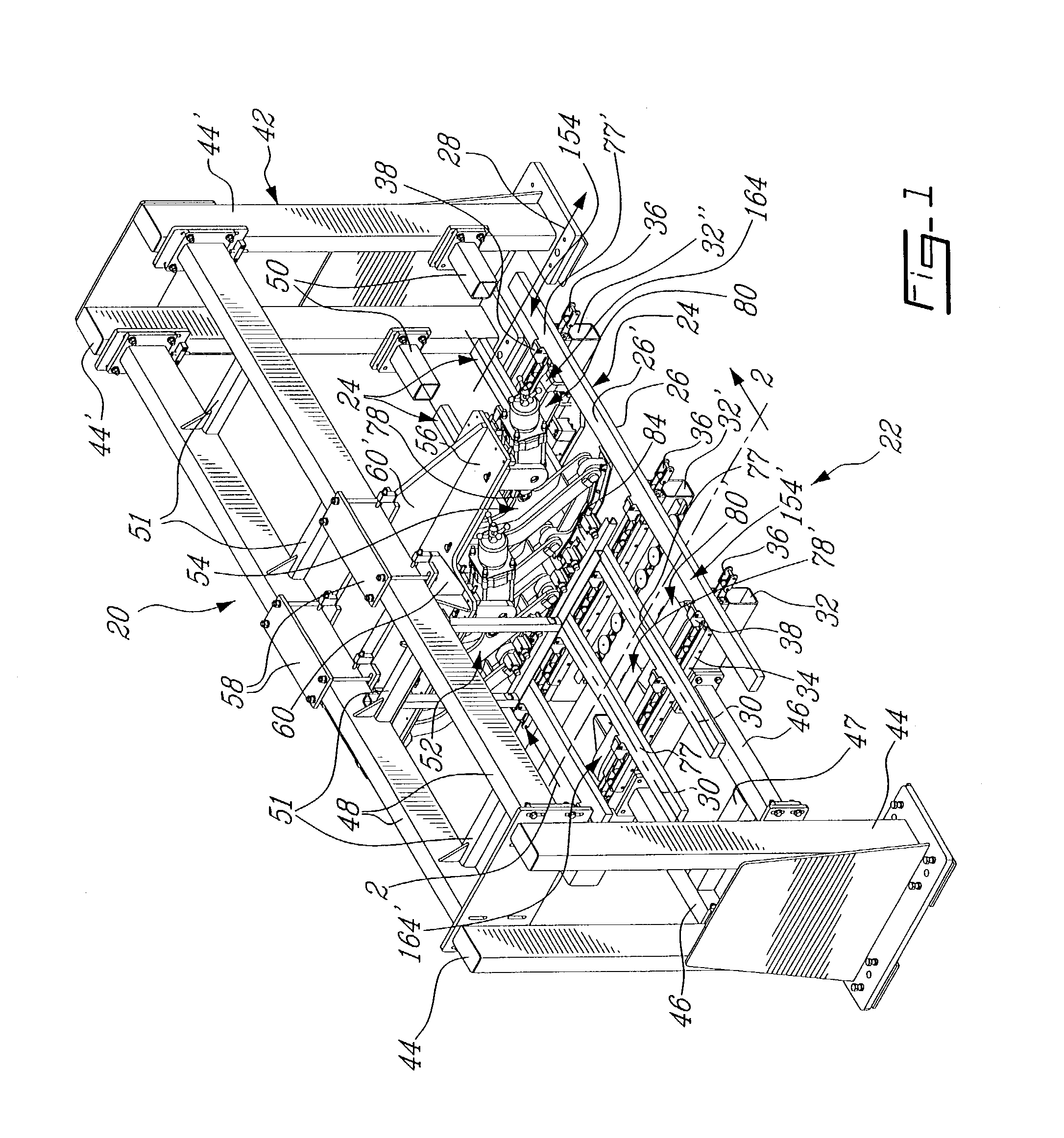Apparatus and method for testing stiffness of articles
a technology of stiffness and apparatus, applied in the field of apparatus and methods for the testing of stiffness, can solve the problems of limited use of such apparatus, inability to implement real-time dynamic testing procedures for all pieces, and inability to test the stiffness of objects in real-time, and achieve the effect of reliable stiffness estimation
- Summary
- Abstract
- Description
- Claims
- Application Information
AI Technical Summary
Benefits of technology
Problems solved by technology
Method used
Image
Examples
second embodiment
[0094]Turning back to FIG. 15, the apparatus 20′ further includes first and second load measuring units generally designated at 179, 181 and respectively associated with first and second deflecting units 52, 54′. The first load measuring unit 179 is formed by a pair of right and left sides subunits 183, 183′ mechanically coupled to first and second rails 78, 78′ of the first bearing unit as shown in FIG. 14, and the second measuring unit 181 is formed by a similar pair of right and left sides subunits 185, 185′ mechanically coupled to the pushing devices 264, 264′ provided on the second bearing unit as will be described later in more detail. Load measuring units 179, 181 are capable of generating signals indicative of respective magnitudes of first and second thrusts as applied by first and second deflecting units 52, 54′ as will be later explained in more detail.
[0095]Turning now to FIG. 19, first (right) rail 78 as part of the first article bearing unit is shown with a correspond...
first embodiment
[0111]On the basis of the above calculations, according to a similar approach used for the first embodiment, the computer preferably applies a correction to the nominal deflection values as set prior to the operation of the apparatus, to compensate the inherent deformation to which the whole structural components of the apparatus are subjected, such as flexion of load cells 156,158, overhead beams 48, first deflecting unit 52 and pushing devices 264, 264′ associated with second deflecting unit 54′.
[0112]The correction is made on the basis of estimated deflection error values associated with first and second deflection values d1, d2 as calculated as follows:
[0113]ErD1=(NetLoad12*KCell1)+(NetLoad22*KCell2)+(InD1TwistD12)(20)ErD2=(InD2LeftPush+InD2RightPush2)-(TwistD22)(21)
with:
InD1=KS1,1*(NetLoad1+NetLoad2)+KS2Left,1*NetLoad3+KS2Right,1*NetLoad4+K1,1*(NetLoad1+NetLoad2) (22)
InD2LeftPush=KS1,2Left*(NetLoad1+NetLoad2)+KS2Left,2Left*NetLoad3+KS2Right,2Left*NetLoad4+K2,2*NetLoad3 (2...
PUM
| Property | Measurement | Unit |
|---|---|---|
| conveying speed | aaaaa | aaaaa |
| symmetrical angle | aaaaa | aaaaa |
| symmetrical angle | aaaaa | aaaaa |
Abstract
Description
Claims
Application Information
 Login to View More
Login to View More - R&D
- Intellectual Property
- Life Sciences
- Materials
- Tech Scout
- Unparalleled Data Quality
- Higher Quality Content
- 60% Fewer Hallucinations
Browse by: Latest US Patents, China's latest patents, Technical Efficacy Thesaurus, Application Domain, Technology Topic, Popular Technical Reports.
© 2025 PatSnap. All rights reserved.Legal|Privacy policy|Modern Slavery Act Transparency Statement|Sitemap|About US| Contact US: help@patsnap.com



